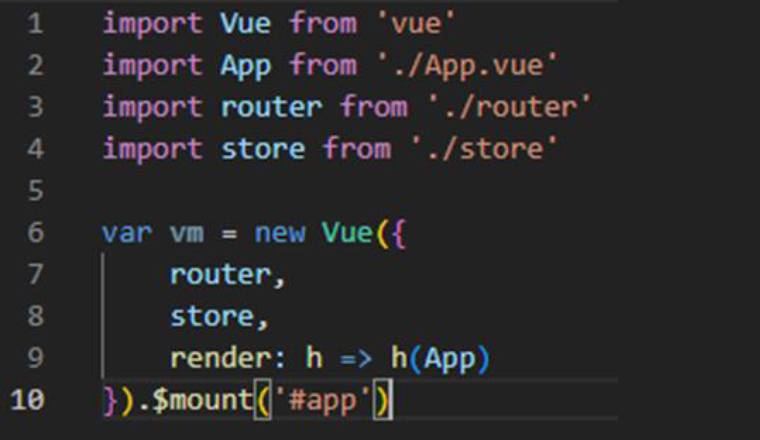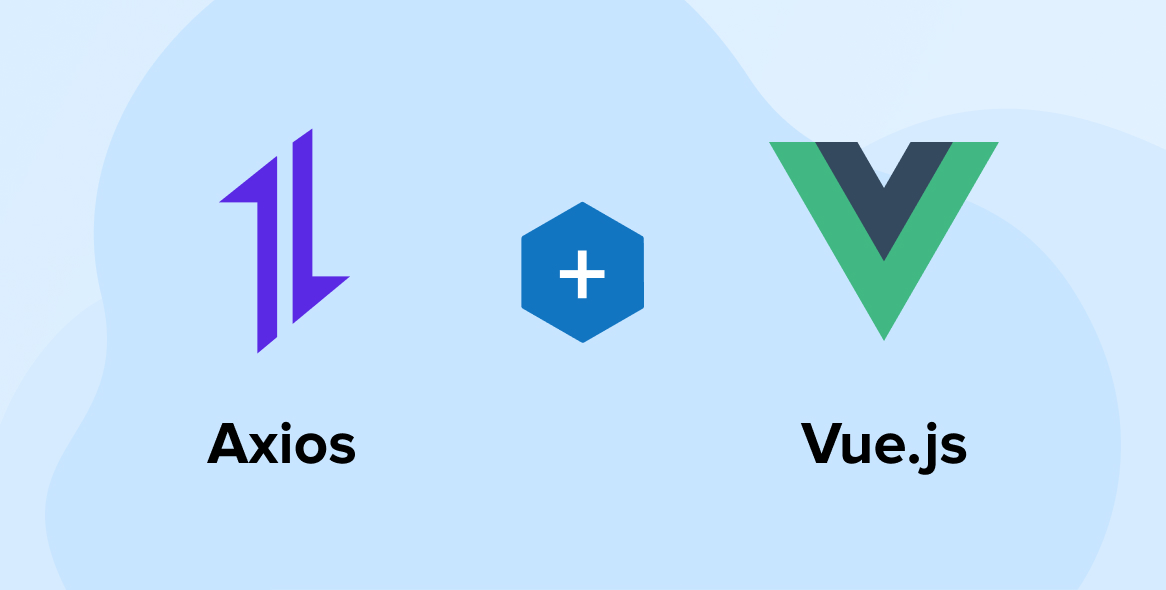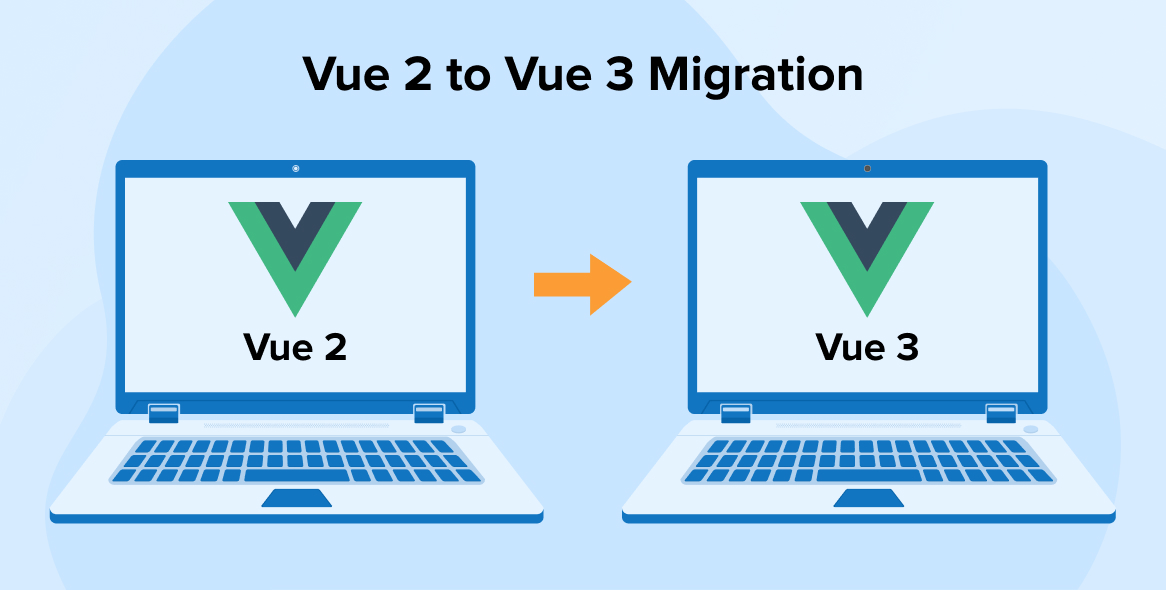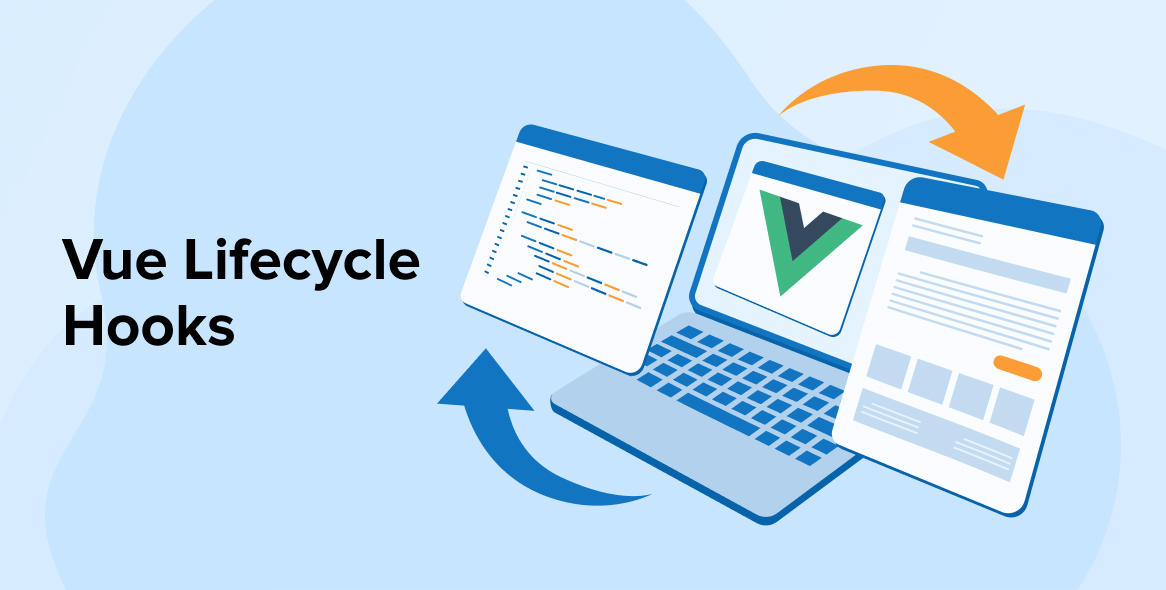
Interviews are crucial stepping stones to new jobs. When going to attend a Vue interview, it is vital to prepare enough. In other words, if you answer the Vue.js interview questions correctly, you will have a greater chance of landing the job.
This post will walk you through the 18 most often asked Vue js interview questions in order to improve your abilities and self-assurance.
1. Top 18 Vue JS Interview Questions and Answers
Here are some top vue js interview questions and answers are:
1.1 What is Vue.js?
Vue.js is a JavaScript framework that is used to create dynamic user interfaces that are adaptive. In addition, VueJs differs from other modular frameworks in that it is supposed to be very adaptive. Vue js is basic and hence straightforward to learn. It is simple to combine with other third-party libraries due to the fact that its core library focuses on view only.
1.2 What are the Benefits of Using Vue.js?
The following are the benefits of utilizing Vuejs:
1. Very Small In Size
One of the greatest advantages of Vuejs is its tiny file size. This fascinating JavaScript plug-in is approximately 18 to 21 kilobytes in size, so it can be downloaded and utilized quickly and simply.
2. Simple to Comprehend and Use
The framework of Vue.js is quite simple to comprehend, which is one of the reasons behind its popularity. And with Vuejs best practices, users may quickly incorporate Vuejs into their web projects and construct applications due to its easy structure.
3. Simple Integration with Existing Applications
The Vue.js framework may be simply integrated with existing apps. Vue.js includes multiple components for every use. It is compatible with all JavaScript-based applications.
4. Flexible in Nature
The adaptability of Vue.js makes it simple for programmers of React.js, Angular.js, and any other modern JavaScript framework to grasp. When using virtual nodes, offers a great deal of flexibility for writing HTML files, JavaScript files, and pure JavaScript files.
5. Vue Components
You may construct reusable custom elements/components in Vue.js apps. A vue.js app contains a root Vue instance created with reusable Vue components.
6. Simple and Thorough Documentation
The documentation for Vue.js is fairly straightforward and extensive, allowing developers to create programs or web pages with minimal understanding of basic HTML elements.
7. Virtual DOM
Identical to other current frameworks such as ReactJS, Ember, etc., Vue.js employs virtual DOM. Virtual DOM is an in-memory tree version of the original HTML DOM that may be modified independently of the actual DOM. When anything inside the HTML is changed only that part is reloaded instead of reloading the actual DOM again.
8. Two-Way Data Binding/ Communication
Vue.js’s MVVM (Model-View-ViewModel) design enables bidirectional communication and makes it simple to manage HTML file blocks by reducing the complexity and keeping the user’s input up-to-date with the application data model.
Further Reading On:
Top Angular Interview Questions and Answers
Top Node.JS Interview Questions and Answers
1.3 Explain the One-Way and Two-Way Data Binding
This is one of the important Vue js interview questions. Both one-way data flow and two-way data flow techniques are supported by Vue.js. Here is the explanation:
1. One-way data flow – This is the most fundamental kind of data binding, and it allows you to edit classes and styles using JavaScript attributes.
<span v-bind:class="{ active: isActive }"></span> |
2. Two-Way Data Binding – It modifies the HTML View and its associated JavaScript attributes. Two-Way Data Binding is accomplished by using the v-model directive in Vue.js.
<input v-model="message" placeholder="edit me"><span>Message is: {{ message }}</span> |
1.4 How Can You Create an Instance of Vue.js?

Utilizing the Vue function, you may create a new Vue instance :
When launching a Vue application, a fresh Vue example must be created.
1.5 How Can You Create Two-Way Bindings in Vue.js?
In Vue.js, the v-model element is employed to build a Two-Way data model/ data flow. In Two-Way Bindings, the model or data connects with DOM elements, and DOM connects back to the data model.
Let’s see an illustration of how Two-Way Bindings is performed.
<div id="myApp">
{{myMessage}}
<input v-model="myMessage">
</div>
<script type="text/javascript">
var message = 'Vue.js is fun';
new Vue({ el: '#myApp', data: { myMessage } });
</script> |
1.6 Explain the Vue.js Mixins
Mixins in Vue.js provide a flexible approach for reusing the code of Vue instances and elements. Mixins are created in a standalone executable file and can be reused repeatedly between components. When a Vue component utilizes a Mixin, the choices of the Mixin are blended with the parameters of the component. You may also construct Global Mixins, but you should use them with discretion as they influence every component instance of Vue.js generated subsequently.
1.7 Explain the Advantages and Disadvantages of Mixins
Here are some advantages and disadvantages of mixins are:
1. Advantages of utilizing mixins
- There are several objects for data storage.
- Its runtime construction can eliminate the support persistence issue.
- In addition, runtime compilation might result in things that appear puzzling.
2. Disadvantages of utilizing mixins
- It heightens dependence.
- Global mixins influence every component, which might lead to a significant maintenance issue.
1.8 What are Components in Vue.js?
Components are elements of Vue with bespoke HTML features that are reusable. They help to extend basic HTML elements and are reused as often as desired or incorporated into some other component to create a child component. With the help of a Vue component, you can utilize information, computation, and operations.
Components let us divide the user interface into distinct, reusable sections and consider each item separately. Commonly, an application is structured as a hierarchy of layered components.
Vue provides its own component structure that allows us to isolate unique information and functionality within each component. Vue works well with native Web Components as well.
1.9 What is a Vue Router? What are Its Important Features?
Vue.js’s default router is named Vue Router. It is incorporated by default with the Vue.js core and is required to construct Single Page Applications using Vue.js.
Below is a listing of Vue Router’s key functionalities:
- Vue Router has a component-based, scalable router architecture.
- Highly simple to execute.
- You are able to modify the Scroll Behavior.
- Enables route/view mapping with nesting.
- Offers fine-grained controls over navigation.
- Route parameter values, query, and wildcards
- JavaScript’s transition mechanism enables View transition effects.
- Links containing active CSS classes.
- History feature or hash mode for HTML5, with automatic fallback in IE9.
1.10 What is Vuex?
VueX is a pattern and framework for state management in Vue.js applications. It serves as a common repository for the many Vue.js application components. Vuex offers rules to guarantee that the state may only be modified in a foreseeable manner. By combining Vuex with the standard Vue.js devtool extension, you may gain a number of additional functionalities.
1.11 What is Reactivity in Vue.js?
When you modify a data value, the page is automatically updated to reflect the modification. The calculated property and data property of Vue is reactive. Vue.js solutions are not dynamic.
In simple terms, reactivity can be thought of as an ability of a variable to update its value automatically everywhere when its value or the other variable’s value that makes reference to our variable is updated.
1.12 What Do You Understand about Component Props in Vue.js?
Every component instance in Vue.js has its own separate perspective. Therefore, you cannot explicitly access a parent component in the design of a child component.
Props are employed to transmit data to child components. Props are custom attributes you can register on the component. When a number is supplied to a prop attribute, it becomes a field on the instance of the component to which it is applied.
Vue.component('blog-post', { // camelCase in JavaScript props: ['postTitle'], template: '<h3>{{ postTitle }}</h3>' }) |
Props are used to pass information from parent component to child component which is easier to use compared to state management libraries like Vuex for small projects. Props is a special keyword in Vue js for properties. Props are read-only and hence cannot be modified by child component instance.
1.13 What are Filters in Vue.js?
Filters are Vue components that allow you to perform filtering and modifications to fluid template data. There are two locations where filters are utilized: mustache interpolations and v-bind expressions. Filters have no effect on component data or anything else; they simply modify the output.
1.14 What are the Main Usages of Filters in Vue.js?
The following are the primary uses of filters in Vue.js:
- Filters are mostly used to screen the data at the DOM level in order to output the data in a particular format in the browser without changing its actual value.
- Filters are utilized to improve the appearance of the view layer.
- Moreover, the filters are replaceable.
- You may specify a filter globally and apply it to any component you like.
- Filters let you organize your data at the view level.
1.15 What Do You Understand by the Term Vue-Loader?
Vue-loader is, by nature, a loader module for a web pack that enables the development of single-file components utilizing the Vue data file. A single-file component is a file with a .vue extension. The theme, design, and script portions make up a single-file component file.
The Vue-loader module facilitates the processing and extraction of each portion of a web pack utilizing various loader modules, such as SASS or SCSS loaders. Thus, the configuration allows for the effortless creation of applications employing Vue files.
In contrast, the Vue-loader module permits static resources to be regarded as dependencies and facilitates processing using webpack loaders. In addition, it permits hot reloading throughout development.
1.16 How Can You Handle Events in Vue.js?
The below instance explains how Events are handled in Vue.js:
HTML Code:
<div id="app"> Name: <input type="text" v-model="name"> <button v-on:click="myClickHandler">Say Hello button> </div> |
JS Code:
var myViewModel = new Vue({ el: '#app', data: my Model, // A click handler inside methods methods: { myClickHandler : function(e) { alert("Hello " + this.name); } } }); |
1.17 What are Directives in Vue.js, List Some of Them You Used
Vue.js has a collection of directives for displaying or hiding items based on criteria. Conditional directives are another name for these directives.
- V-if directive
- v-on
- v-else
- v-else-if
- v-model
- v-show
1. v-if directive: The v-if directive is utilized to add or delete DOM components depending on the condition provided. For instance, the button below won’t appear in case isLoggedIn is adjusted to false.
<button v-if="isLoggedIn">Logout</button> |
The v-if directive also enables you to manage many items with a single v-if expression by enclosing all the components within an <template> element containing the criteria. You may optionally apply both the label and button, for instance.
<template v-if="isLoggedIn"> <label> Logout </button> <button> Logout </button> </template> |
2. v-else directive: This one displays text when the surrounding v-if statement evaluates to false. This is the same as the else block in any computer syntax, and it is followed by either a v-if or v-else-if block. You do not need to provide value to this. v-else is required, for instance, to display the LogIn button in case isLoggedIn is adjusted to false.
<button v-if="isLoggedIn"> Logout </button> <button v-else=""> Log In </button> |
3. v-else-if directive: It is utilized when checking more than two alternatives. Using a v-else expression, you may, for instance, present some information instead of the LogIn button when the ifLoginDisabled attribute is set to true.
<button v-if="isLoggedIn"> Logout </button> <label v-else-if="isLoginDisabled"> User login disabled </label> <button v-else=""> Log In </button> |
4. v-show directive: Comparable to v-if, the v-show directive displays all items to the DOM and then utilizes the CSS display property to show/hide them. The v-show directive is often suggested by professionals if you want the components to turn on and off.
<span v-show="user.name">Welcome user,{{user.name}}</span> |
1.18 What is the VUE-Resource? How Would You Install the Vue-Resource?
The VUE-resource is a Vue.js plugin. This is often required in conjunction with Vue.js to conduct HTTP requests and process replies using XHMLHttpRequests or JSONP.
The below yarn or npm command may be used to install VUE-resource:
$ yarn add vue-resource $ npm install vue-resource |
2. Conclusion
These frequently asked Vue.js Interview questions and their answers in this article should offer a clear sense of the sorts of subjects you may expect to be discussed during the interview.
There are also a number of other topics that may be posed during the interview; consequently, proper preparation is required.
Best wishes on your upcoming interview. If you have more doubts, please drop them in the comments!






Comments
Leave a message...